Abstract
The fatty acids obtained from extractable lipids of the anaerobic sulfate bacterium Desulfovibrio desulfuricans were identified. Saturated and monoenoic iso (C15-C19) and anteiso (C15, C17) fatty acids and saturated normal (C14-C18) and monoenoic normal (C16, C18) fatty acids were shown to be shown to be present by capillary gas chromatography-mass spectrometry. Iso and anteiso beta-hydroxy fatty acids were analyzed as trimethylsilyl ethers in the same way. The position of methyl branches in the monoenoic fatty acids was determined from characteristic fragment ions in the mass spectra of their methyl esters. Disilyloxy methyl esters, prepared by derivatization of the mono unsaturated methyl esters and analyzed by capillary gas chromatography-mass spectrometry, provided the position of double bonds. The monoenoic fatty acids identified in this way were normal (delta7-C16:1, delta9-C16:1, delta9-C18:1, delta11-C18:1), iso (delta7-C15:1, delta9-C16:1, delta9-C17:1, delta11-C18:1, delta11-C19:1), and anteiso (delta7-C15:1, delta9-C17:1). Iso delta9-C17:1 fatty acid is present as the major component. The occurrence of these monoenoic fatty acids in this bacterium is of taxonomical importance.
Full text
PDF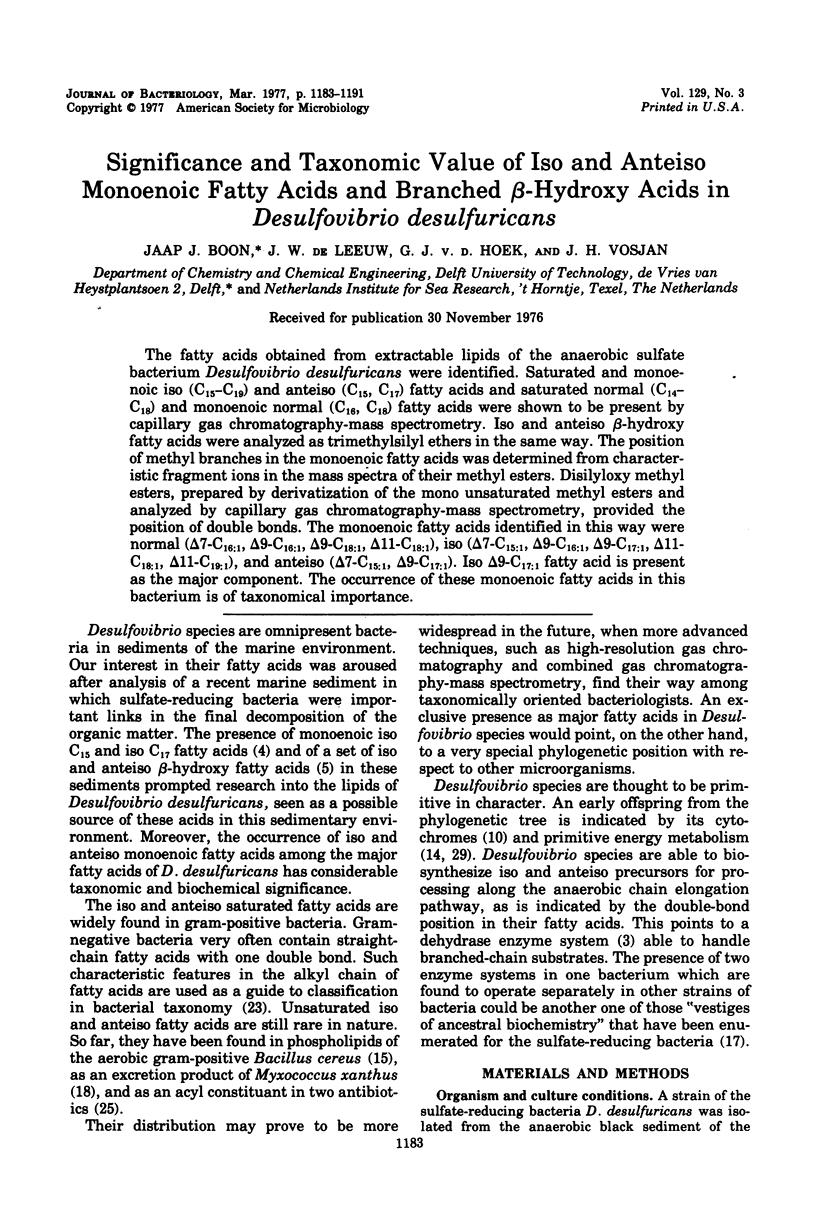
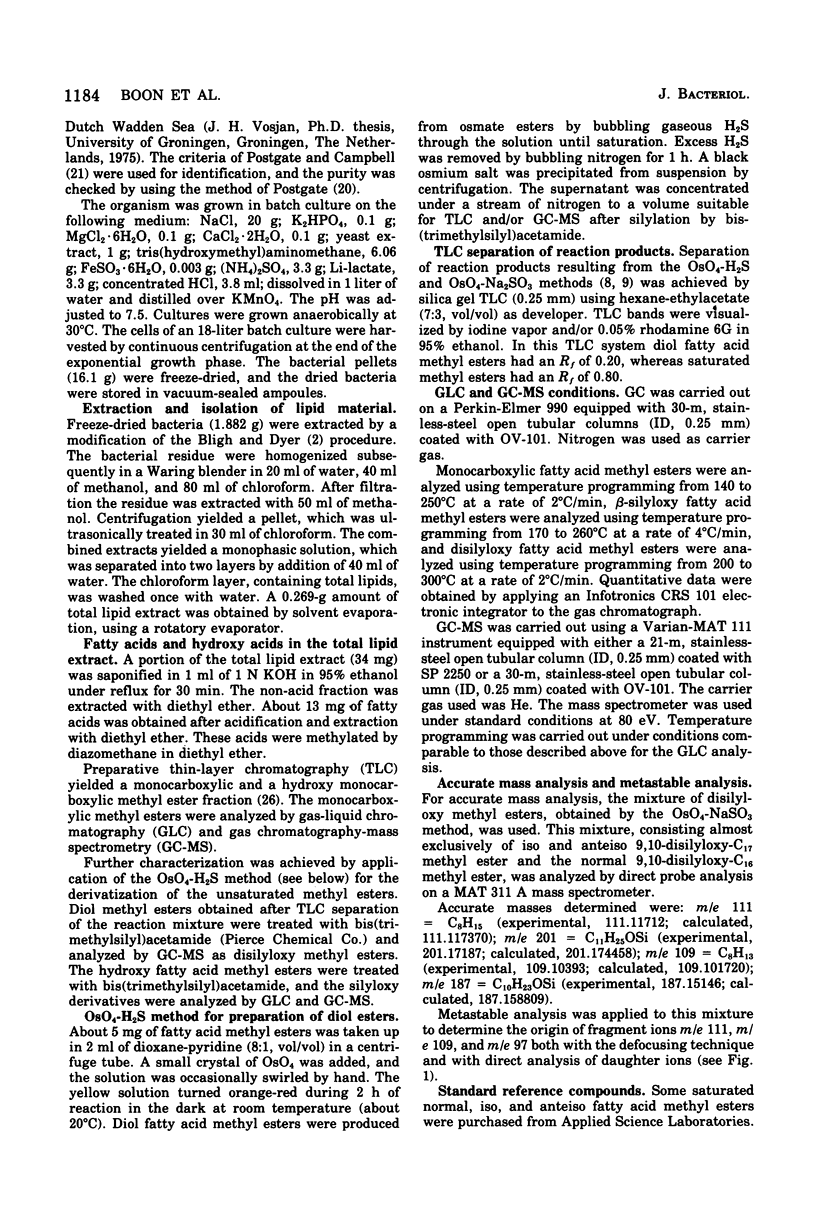
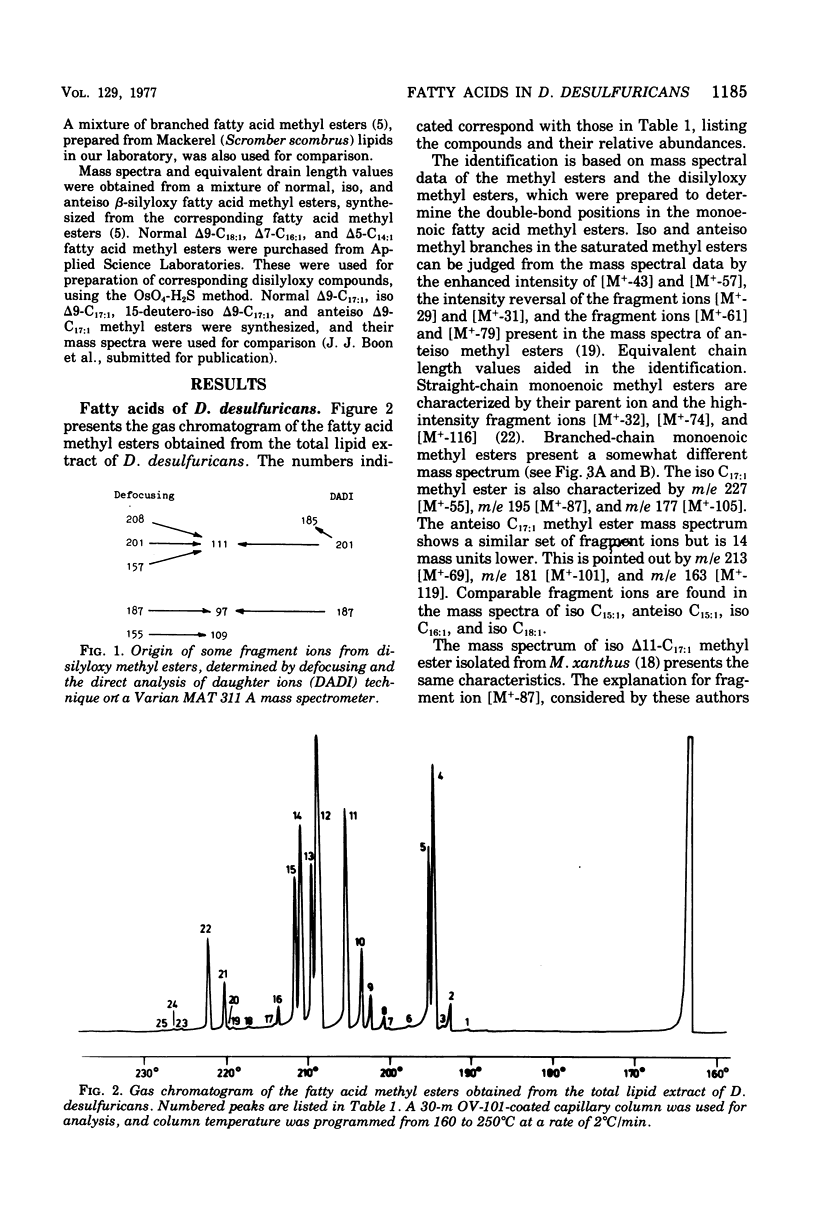
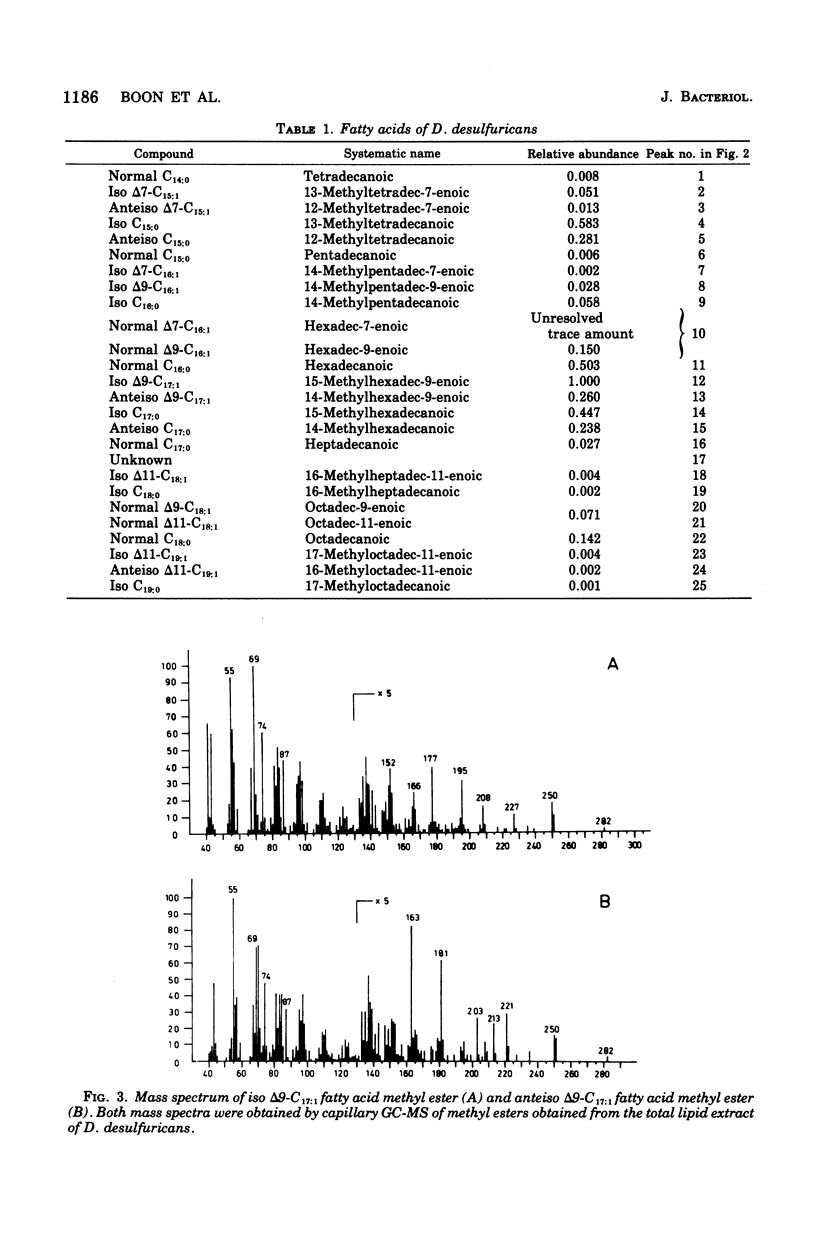
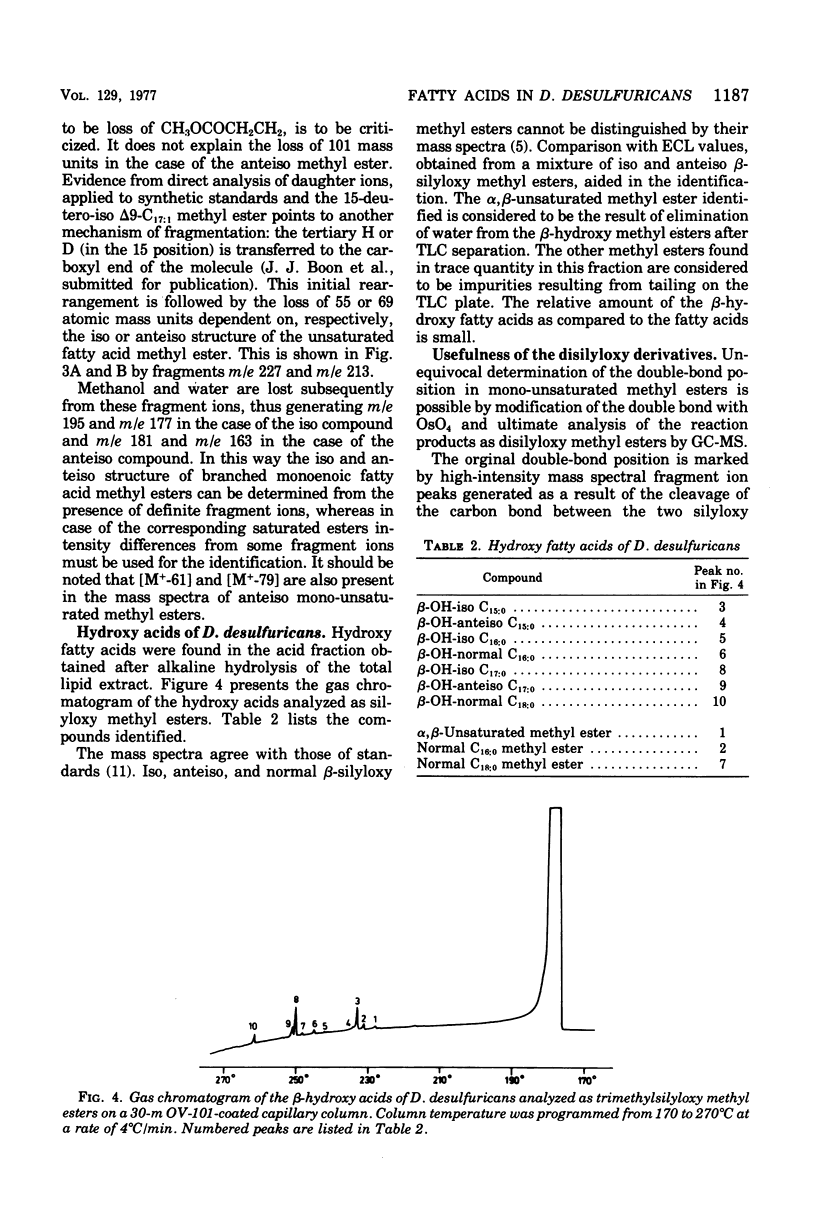
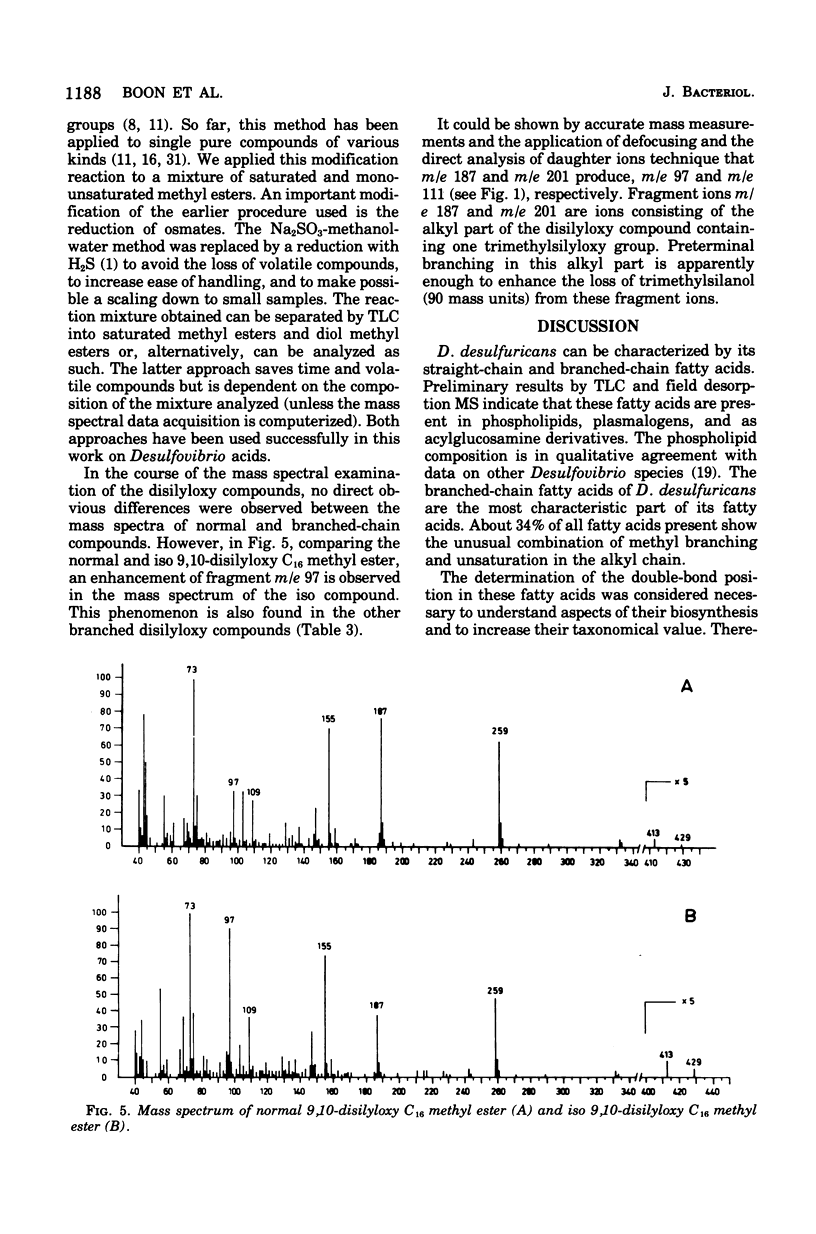
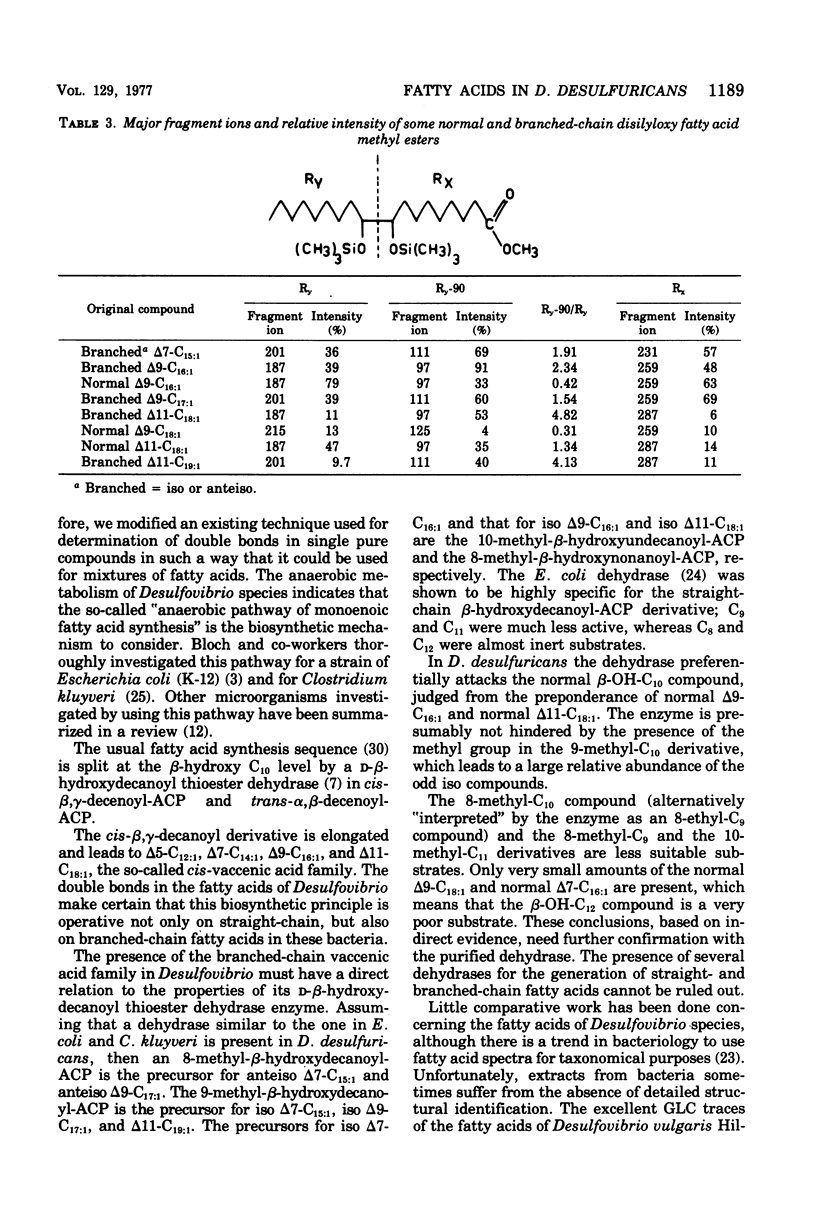
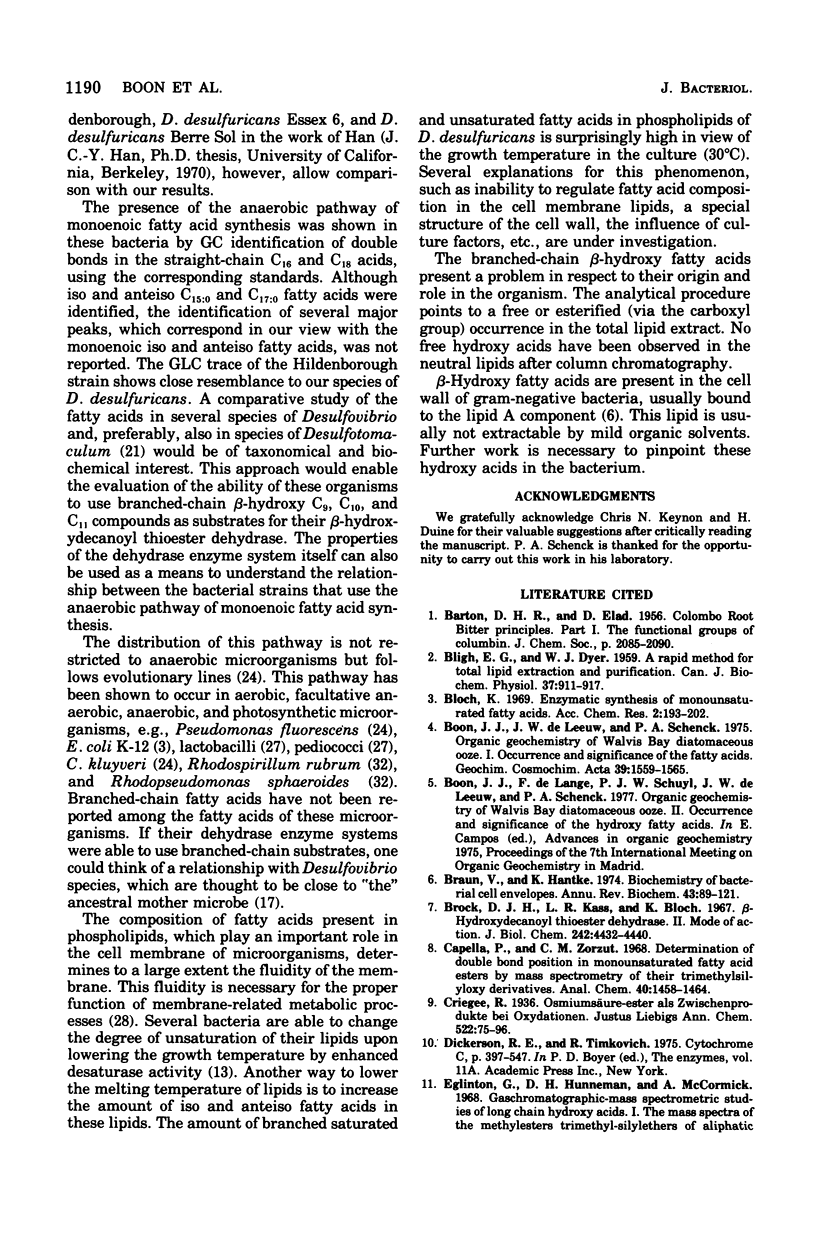
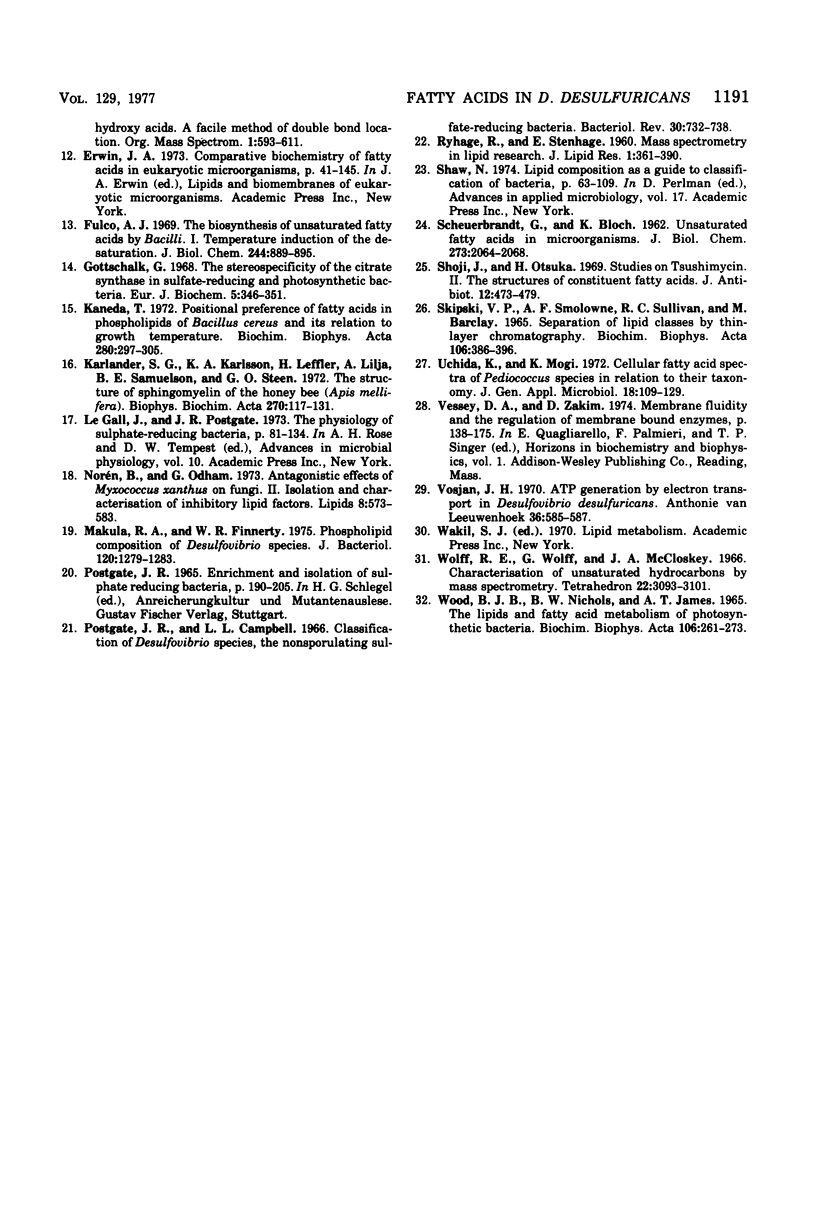
Selected References
These references are in PubMed. This may not be the complete list of references from this article.
- BLIGH E. G., DYER W. J. A rapid method of total lipid extraction and purification. Can J Biochem Physiol. 1959 Aug;37(8):911–917. doi: 10.1139/o59-099. [DOI] [PubMed] [Google Scholar]
- Braun V., Hantke K. Biochemistry of bacterial cell envelopes. Annu Rev Biochem. 1974;43(0):89–121. doi: 10.1146/annurev.bi.43.070174.000513. [DOI] [PubMed] [Google Scholar]
- Brock D. J., Kass L. R., Bloch K. Beta-hydroxydecanoyl thioester dehydrase. II. Mode of action. J Biol Chem. 1967 Oct 10;242(19):4432–4440. [PubMed] [Google Scholar]
- Fulco A. J. The biosynthesis of unsaturated fatty acids by bacilli. I. Temperature induction of the desaturation reaction. J Biol Chem. 1969 Feb 10;244(3):889–895. [PubMed] [Google Scholar]
- Gottschalk G. The stereospecificity of the citrate synthase in sulfate-reducing and photosynthetic bacteria. Eur J Biochem. 1968 Aug;5(3):346–351. doi: 10.1111/j.1432-1033.1968.tb00376.x. [DOI] [PubMed] [Google Scholar]
- Kaneda T. Positional preference of fatty acids in phospholipids of Bacillus cereus and its relation to growth temperature. Biochim Biophys Acta. 1972 Oct 5;280(2):297–305. doi: 10.1016/0005-2760(72)90097-5. [DOI] [PubMed] [Google Scholar]
- Karlander S. G., Karlsson K. A., Leffler H., Lilja A., Samuelsson B. E., Steen G. O. The structure of sphingomyelin of the honey bee (Apis mellifera). Biochim Biophys Acta. 1972 May 23;270(1):117–131. doi: 10.1016/0005-2760(72)90185-3. [DOI] [PubMed] [Google Scholar]
- Makula R. A., Finnerty W. R. Phospholipid composition of Desulfovibrio species. J Bacteriol. 1974 Dec;120(3):1279–1283. doi: 10.1128/jb.120.3.1279-1283.1974. [DOI] [PMC free article] [PubMed] [Google Scholar]
- Norén B., Odham G. Antagonistic effects of Myxococcus xanthus on fungi. II. Isolation and characterization of inhibitory lipid factors. Lipids. 1973 Oct;8(10):573–583. doi: 10.1007/BF02532714. [DOI] [PubMed] [Google Scholar]
- Postgate J. R., Campbell L. L. Classification of Desulfovibrio species, the nonsporulating sulfate-reducing bacteria. Bacteriol Rev. 1966 Dec;30(4):732–738. doi: 10.1128/br.30.4.732-738.1966. [DOI] [PMC free article] [PubMed] [Google Scholar]
- RYHAGE R., STENHAGEN E. Mass spectrometry in lipid research. J Lipid Res. 1960 Oct;1:361–390. [PubMed] [Google Scholar]
- SCHEURBRANDT G., BLOCH K. Unsaturated fatty acids in microorganisms. J Biol Chem. 1962 Jul;237:2064–2068. [PubMed] [Google Scholar]
- Shoji J., Otsuka H. Studies on tsushimycin. II. The structures of constituent fatty acids. J Antibiot (Tokyo) 1969 Oct;22(10):473–479. doi: 10.7164/antibiotics.22.473. [DOI] [PubMed] [Google Scholar]
- Skipski V. P., Smolowe A. F., Sullivan R. C., Barclay M. Separation of lipid classes by thin-layer chromatography. Biochim Biophys Acta. 1965 Oct 4;106(2):386–396. doi: 10.1016/0005-2760(65)90047-0. [DOI] [PubMed] [Google Scholar]
- Vessey D. A., Zakim D. Membrane fluidity and the regulation of membrane-bound enzymes. Horiz Biochem Biophys. 1974;1:138–174. [PubMed] [Google Scholar]
- Wood B. J., Nichols B. W., James A. T. The lipids and fatty acid metabolism of photosynthetic bacteria. Biochim Biophys Acta. 1965 Oct 4;106(2):261–273. doi: 10.1016/0005-2760(65)90034-2. [DOI] [PubMed] [Google Scholar]


